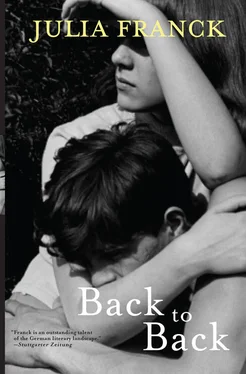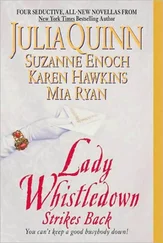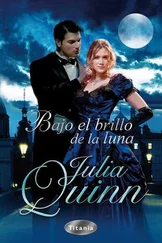I could go shopping with you, he offered.
Another time. She smiled and put her head to one side, resting it on the window. She was wearing a woollen cap that covered her hair, as the nurse’s cap covered it in the daytime. How long was her hair, he wondered, and where did it fall to when it wasn’t covered up? If they had known each other longer, he could tell, she would have laid her head on his shoulder. Her slender hands clutched the bag on her lap. Only now did he notice her bright ring. The nursing staff weren’t allowed to wear jewellery on duty, she had told him so herself that morning, no bracelets or rings because of the danger of injury.
How old is your child?
She’ll be two in April.
A little girl?
She nodded. The corners of her mouth moved, almost imperceptibly, as she looked out of the window into the darkness of the streets passing by. She would disappear into that darkness, Thomas already missed her. His arm touched her shoulder, the slight jolting of the tram brought the fabric of their coats sometimes closer together, sometimes further away. He wondered what to say in goodbye when they left the tram at the Frankfurt Gate and went their separate ways.
In Rahnsdorf, Ella was sitting in the smoking room, with a brocade cloak over her shoulders and a cactus leaf on her head, drawing. There was no one else at home. The twins had been with a foster-family since the beginning of the year.
No one around? Thomas closed the door behind him. Ella carefully turned her head. Her neck was going to be stiff if she balanced the cactus on her head any longer.
Aren’t I anyone?
There was something suspect about her expression. Had they quarrelled? Had something happened?
Käthe’s gone to the theatre. Ella put her pencil down and looked at the fired clay head standing before her. Käthe had made it a few years ago, and its nose was rather too small. She bent carefully, keeping her head erect so that the cactus leaf wouldn’t fall to the floor, and then straightened her back.
Why have you put that cactus on your head?
So that I’ll sit up straight at last. Her injured tone of voice told Thomas that there must have been a quarrel.
I really wanted to go too, but Käthe wouldn’t take me. She says I have to learn to draw properly first, and then maybe she’ll get me a place at the fashion college. On her stool, Ella turned in Thomas’s direction so that she could look at him. But on three conditions. If I’ll take a serious interest in art, if I’ll study drawing properly, and if I go to adult education classes.
So what? I thought you’d been going to those for quite a while.
Tears shot into Ella’s eyes. Of course I’ve been going. For months. But not any more, she sobbed. I can’t even say my multiplication tables from one to ten. I don’t know what’s the matter with me.
Thomas went over to her. He was about to take the cactus leaf off her head with his fingertips, but as soon as he touched the fine prickles Ella snapped: Don’t do that! You must help me! She held on to the cactus with one hand, shrieked, and tried to put her hand in her mouth, which was much too small for it.
Wait. Thomas went into the bathroom, opened the drawer of the little cupboard, found the tweezers and hurried back to the smoking room. Wait, I’ll help you, he cried, when he saw Ella leaning forward to bury her face in her hands.
What can I do? I can’t do anything. What do I want? I don’t want anything. What am I? I’m nothing. Ella was crying.
Stop it, Ella, you’ll rub the prickles into your face. He removed one of her hands from her face, and began pulling the prickles out of her skin with the tweezers. As the fine ones kept eluding him, Ella let her tears fall on her hands, and Thomas had to pull himself together to keep from laughing furiously.
I’m stupid. Little-Ella is really stupid.
Please stop that Little-Ella stuff. You’re not stupid. I’ll help you. Thomas had found the easiest way to take hold of the prickles, and now he was pulling them out at increasing speed, until the first hand was clear. Ella had only a very few prickles in her other hand.
They sat down at the big table in the smoking room, and Thomas sharpened a pencil. A large book of pictures of Italian Renaissance paintings served them as a base on which to place a sheet of graph paper. Thomas drew a horizontal line on it, and a vertical line over the horizontal one. That’s the x-axis and this is the y-axis. Imagine the y-axis as a thermometer. Here, this corresponds to one, this to two, this to three. Thomas drew tiny lines along the vertical. And in the minus area you have minus one, two, three, four, and so on. He quickly sketched the units. It’s important to be systematic, always stick to the same sequence, or it won’t work. I’ll show you a simple example first. Assuming that f of x equals. . Thomas noted down the little letters and brackets.
Why x and y? Couldn’t the upright line be there too? Ella raised her eyebrows, with some effort, and fluttered her eyelids. Her shaky voice showed that up to this point she had hardly been able to listen. Already she didn’t understand what he was trying to explain to her.
Of course. Anything could be. But this is about the area of definition, and if I decide that I want to look more closely at a curve, or represent its calculation graphically, then –
The what? Area of de-fit-ion?
Definition. Never mind, just look at this. This f of x corresponds to the parabola that I’ll show you, f (x) = (x — 4) 2+ 3. Now we’re looking at its situation in the system of coordinates, look where its apex is, see in what direction it opens, and how it is curved. You get the idea?
You act as if I ought to know all this! Ella struck the table with her fist. But I don’t. Apex, f of x, what does it all mean?
The more agitated Ella became, the calmer Thomas was. He knew her moments of despair and impatience, her assumption that she was stupid, her suspicion that no one would ever manage to explain something to her if she simply didn’t understand it already. Here, take this. Thomas handed her the pencil.
So what am I supposed to do with it now? She furiously scribbled on the top corner of the graph paper until the lead broke.
Sharpen it. Thomas held the pencil sharpener out to her. It’s really very simple, he said calmly, smiling confidently at her. Listen.
Ha ha! Very simple.
Every quadratic function is a parabola. Draw the shape down here in the corner. Do you know what a parabola looks like?
No. Ella had cast her eyes down as if ashamed of herself. She sharpened and sharpened an ever longer coil of wood from the point of her pencil.
It’s sharp now. Thomas took the pencil out of her hand and swiftly sketched a parabola. That’s what it looks like. He gave the pencil back to Ella. The last number here, plus three, will show you at a glance where your zero point has shifted along the y coordinate. So if you assume that f of x is the point of intersection of the two coordinates, zero, then look for the level where the apex could be situated.
Here? Ella pushed the pencil to a place on the paper. With verve, she drew a line in the upper right-hand corner of the sheet, put the pencil to the paper again below it and drew a similar line to the left. There’s your parabola!
Yes. Thomas wondered how to ensure that she didn’t get even more worked up. That’s a parabola. And he added, almost inaudibly: more or less.
What?
But not the one that belongs to the equation here. Your parabola needs another equation. It ought to be more like f(x) = x 2+3. He didn’t tell her that in addition her parabola did not show the requisite symmetry, but bulged far too much, and was asymmetrical to the axis of reflection.
Well, there you are! Ella got to her feet and threw the pencil down on the table. I told you I couldn’t do it. Anyway, what does f of x mean, why is it all supposed to have a function? I don’t have a function myself, do I? She was shouting so violently that tiny drops sprayed out of her mouth.
Читать дальше












